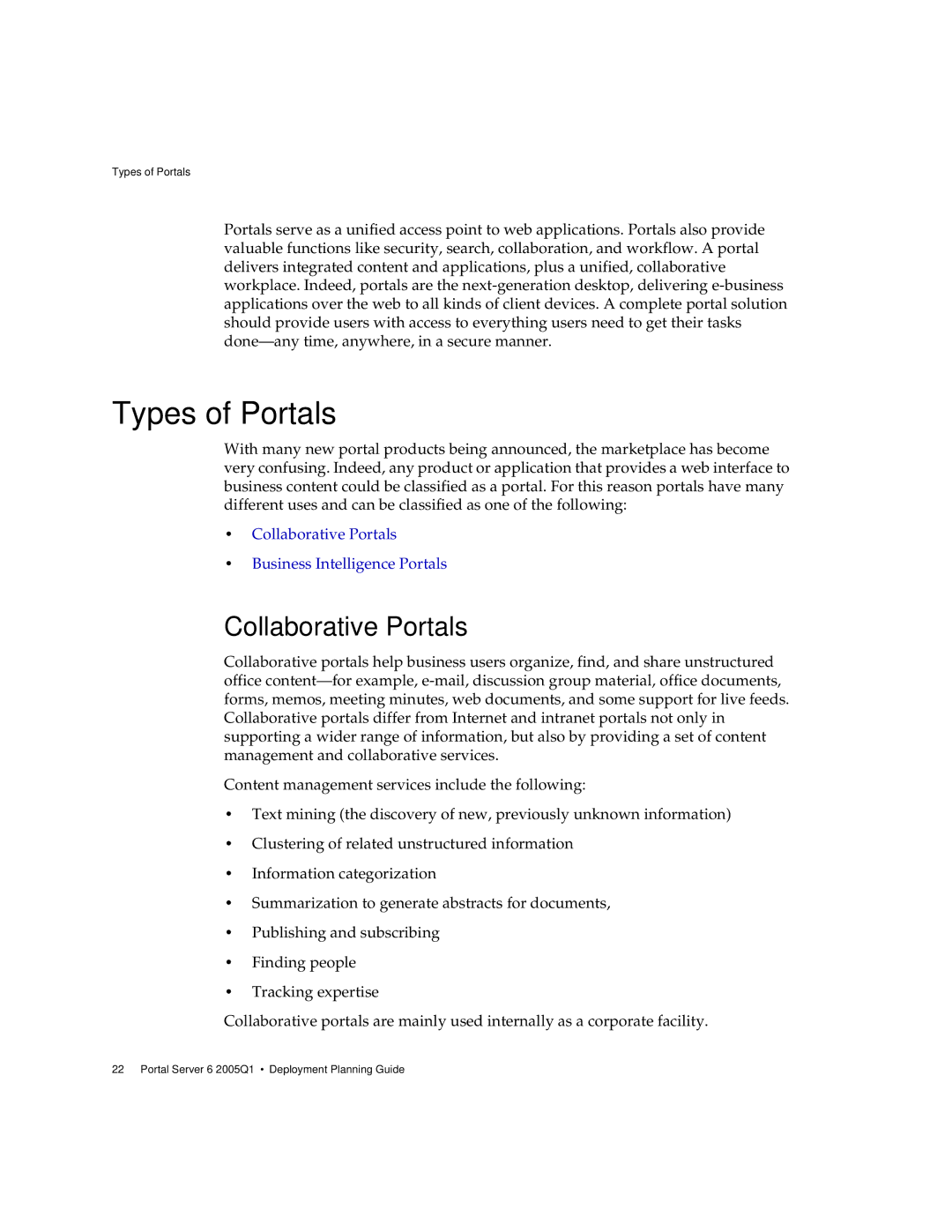Types of Portals
Portals serve as a unified access point to web applications. Portals also provide valuable functions like security, search, collaboration, and workflow. A portal delivers integrated content and applications, plus a unified, collaborative workplace. Indeed, portals are the
Types of Portals
With many new portal products being announced, the marketplace has become very confusing. Indeed, any product or application that provides a web interface to business content could be classified as a portal. For this reason portals have many different uses and can be classified as one of the following:
•Collaborative Portals
•Business Intelligence Portals
Collaborative Portals
Collaborative portals help business users organize, find, and share unstructured office
Content management services include the following:
•Text mining (the discovery of new, previously unknown information)
•Clustering of related unstructured information
•Information categorization
•Summarization to generate abstracts for documents,
•Publishing and subscribing
•Finding people
•Tracking expertise
Collaborative portals are mainly used internally as a corporate facility.
